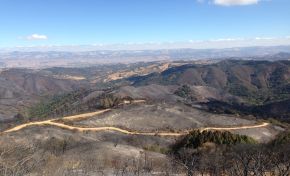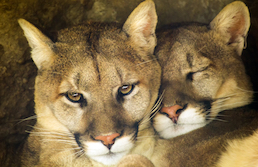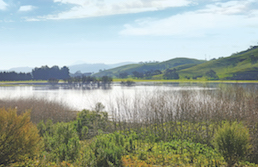
Climate change is a global issue that poses a direct threat to our quality of life. The earth’s temperature is steadily rising, impacting our planet’s people, wildlife, and natural ecosystems. By protecting open spaces and the natural resources within them, the Authority can help human and natural communities become more resilient to climate change.

Climate change, the rise in Earth's temperature, is a result of the "greenhouse effect." Greenhouse gases like carbon dioxide, methane, and nitrous oxide create a blanket around the Earth and prevent the loss of heat to space. Human activity has intensified the effects of greenhouse gases by burning fossil fuels and landscape changes like deforestation, for example.
The Authority participates in the Climate and Agriculture Preservation Program that aims to protect agricultural lands in order to reduce greenhouse gas emissions.
Conservative climate change scenarios predict that, within the Santa Clara County, the temperature will increase 3.6 to 10.8℉ by the end of the century, altering vegetation patterns and harming wildlife habitats (Ekstrom and Moser 2012). Climate change will cause a shift in plant and animal populations, some favoring the new climate conditions while others will be forced to seek higher elevations. Higher temperatures and drier conditions are likely to increase the intensity and frequency of wildfires. Changes in rainfall will likely increase both drought and flooding – affecting urban areas, aquatic ecosystems, and water supply (PRBO Conservation Science 2011). Within the Authority’s jurisdiction, much of the urban development is in flood-risk areas that are already built out and therefore cannot adapt to larger flood events.




To include climate change impacts in every conservation decision, the Authority uses Climate-Smart Principles* to guide efforts. By protecting large, interconnected landscapes, focusing on water resources, and planning for extremes, the Authority can help build in resilience to help natural and human communities adapt.
Learn more about climate change in the Santa Clara Valley Greenprint or read our Nature-Based Solutions for a Climate Smart Future brochure.
Climate Change
*Developed by the Bay Area Ecosystems Climate Change Consortium


